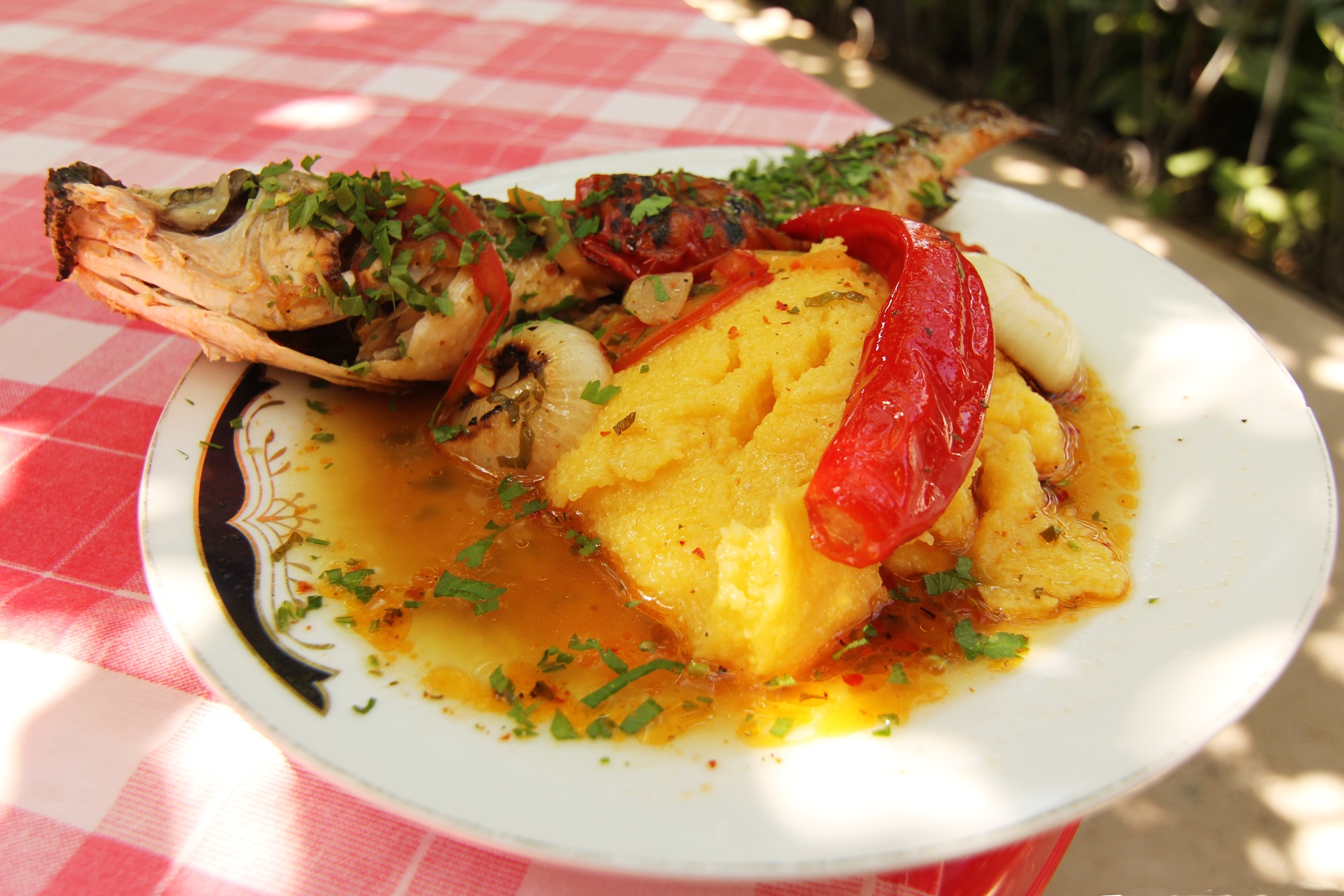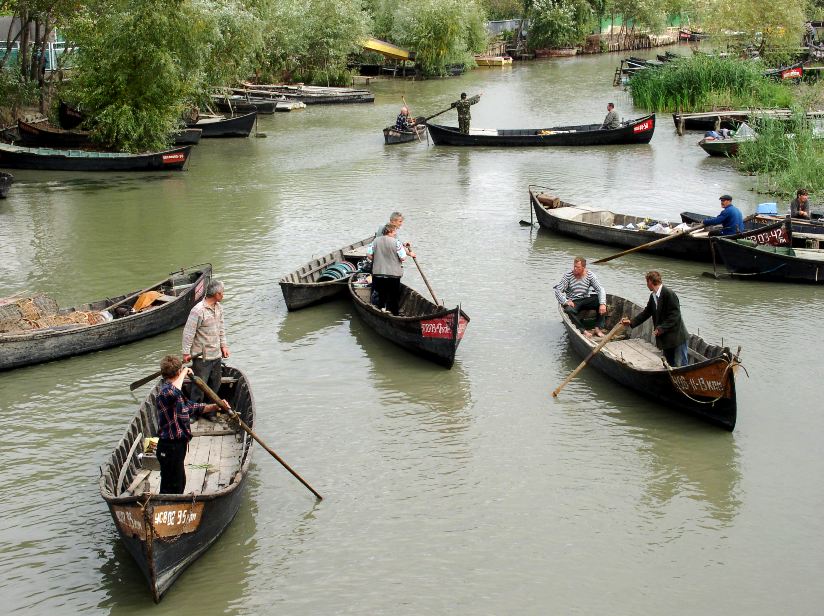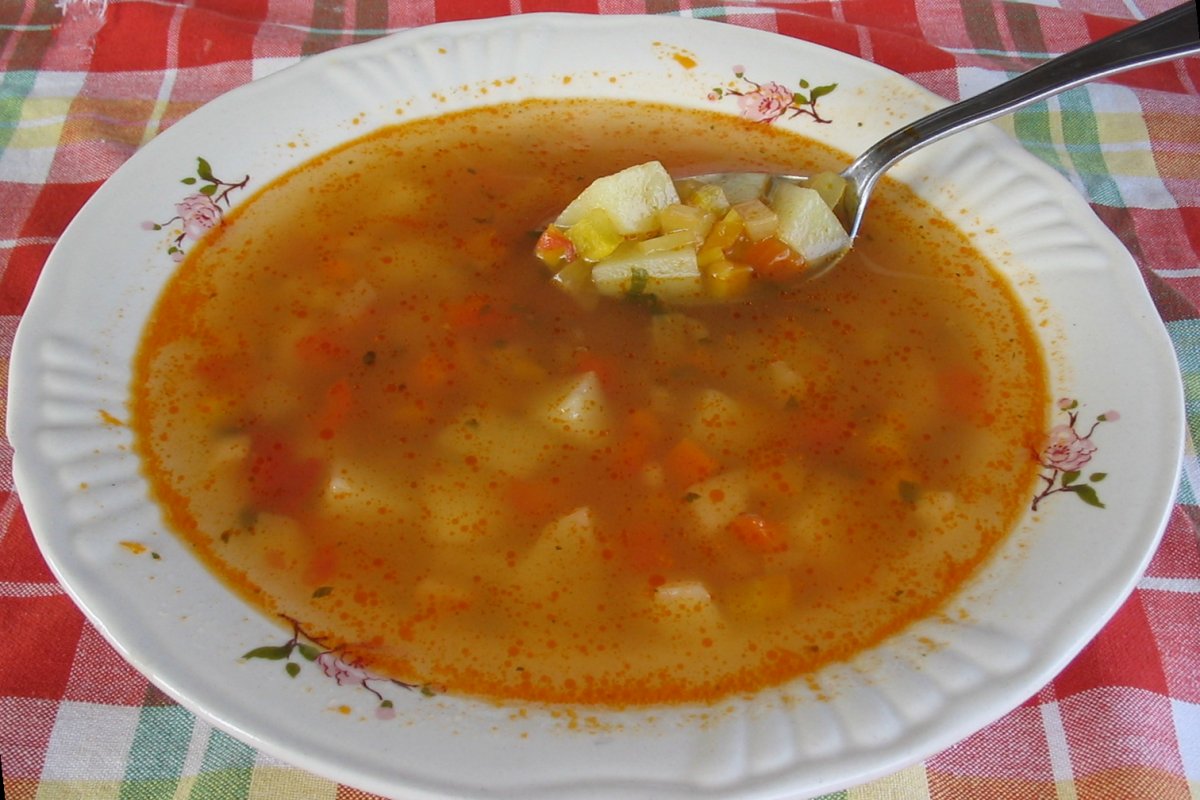|
Saramură De Crap
Saramură is a Romanian "sauce" for marinating. It can be found in nature: water containing salt; salt water spring or it can be homemade by boiling water with salt and other ingredients (depending on individual taste, such as garlic, pepper, chili, etc.). The sauce is used in the home (to preserve some foods as meat, fish, etc.), in agriculture, in the tanning industry. After being marinated and dried the alimentary goods can be smoked or cooked or they can be eaten as they are. Recipes vary greatly, the common part being meat /fish grilled (sometimes on a salt bed). Usually the dish includes vegetables, mamaliga, polenta, potatoes, etc. (The Romanian word itself means "brine (other), brine".) Lipovans would call the dish ''rassol'', e.g., ''saramură de carp'' (carp saramura) is called ''karp rassol''. ''Saramură de carp'' is often translated as "carp in brine" or "salted carp". See also * List of smoked foods * References Further readingSaramură de peşte ... [...More Info...] [...Related Items...] OR: [Wikipedia] [Google] [Baidu] |
Polenta
Polenta (, ) is a dish of boiled cornmeal that was historically made from other grains. The dish comes from Italy. It may be served as a hot porridge, or it may be allowed to cool and solidify into a loaf that can be baked, fried, or grilled. The variety of cereal used is usually yellow maize, but often buckwheat, white maize, or mixtures thereof may be used. Coarse grinds make a firm, coarse polenta; finer grinds make a soft, creamy polenta. Polenta is a staple of Northern Italian, Swiss and Balkan (where it is called kačamak or žganci) cuisines (and, to a lesser extent, the Central Italian one, e.g. Tuscany) and its consumption was traditionally associated with lower classes, as in times past cornmeal mush was an essential food in their everyday nutrition. Etymology covered any hulled and crushed grain, especially barley-meal, and is derived from the for 'fine flour,' which shares a root with , meaning 'dust.'''Oxford English Dictionary'' 3rd edition, 2006''s.v.''/ref ... [...More Info...] [...Related Items...] OR: [Wikipedia] [Google] [Baidu] |
Brine (other)
Brine is water saturated or nearly saturated with salt. Brine can also refer to: *Brining, treating food by steeping in brine * Brine (brand), a sporting goods manufacturer *Brine Lacrosse, mobile game *Brine pool A brine pool, sometimes called an underwater lake, deepwater or brine lake, is a volume of brine collected in a seafloor depression. The pools are dense bodies of water that have a salinity that is three to eight times greater than the surround ..., areas of brine on the ocean basin * Brine shrimp, the genus ''Artemia'' * Brine (surname) {{disambiguation ... [...More Info...] [...Related Items...] OR: [Wikipedia] [Google] [Baidu] |
Lipovans
, flag = Flag of the Lipovans.png , flag_caption = Flag of the Lipovans , image = Evstafiev-lipovane-slava-cherkeza.jpg , caption = Lipovans during a ceremony in front of the Lipovan church in the Romanian village of Slava Cercheză in 2004 , population = , region1 = , pop1 = 23,487 , ref1 = , region2 = , pop2 = , ref2 = , region3 = , pop3 = , ref3 = , region4 = , pop4 = 700–800 , ref4 = , religions = Old Believers (Eastern Orthodox Christianity) , languages = Russian, Romanian, Ukrainian, Bulgarian , related = Russians , footnotes = The Lipovans or Lippovans (russian: Липовáне; ro, Lipoveni; uk, Липовани; bg, Липованци) are ethnic Russian Old Believers living in Romania, Ukraine, Moldova and Bulgaria who settled in the Principality of Moldavia, in the east of the Principality of Wallachia (Muntenia), and in the regions of Dobruja and Budjak during the 17th and 18th centuries. According to the 2011 Romanian census, ... [...More Info...] [...Related Items...] OR: [Wikipedia] [Google] [Baidu] |
Rassol
Pickling is the process of preserving or extending the shelf life of food by either anaerobic fermentation in brine or immersion in vinegar. The pickling procedure typically affects the food's texture and flavor. The resulting food is called a ''pickle'', or, to prevent ambiguity, prefaced with ''pickled''. Foods that are pickled include vegetables, fruits, meats, fish, dairy and eggs. Pickling solutions that are typically highly acidic, with a pH of 4.6 or lower, and high in salt, prevent enzymes from working and micro-organisms from multiplying. Pickling can preserve perishable foods for months. Antimicrobial herbs and spices, such as mustard seed, garlic, cinnamon or cloves, are often added. If the food contains sufficient moisture, a pickling brine may be produced simply by adding dry salt. For example, sauerkraut and Korean kimchi are produced by salting the vegetables to draw out excess water. Natural fermentation at room temperature, by lactic acid bacteria, produces th ... [...More Info...] [...Related Items...] OR: [Wikipedia] [Google] [Baidu] |
Carp
Carp are various species of oily freshwater fish from the family Cyprinidae, a very large group of fish native to Europe and Asia. While carp is consumed in many parts of the world, they are generally considered an invasive species in parts of Africa, Australia and most of the United States. Biology The cypriniformes (family Cyprinidae) are traditionally grouped with the Characiformes, Siluriformes, and Gymnotiformes to create the superorder Ostariophysi, since these groups share some common features. These features include being found predominantly in fresh water and possessing Weberian ossicles, an anatomical structure derived from the first five anterior-most vertebrae, and their corresponding ribs and neural crests. The third anterior-most pair of ribs is in contact with the extension of the labyrinth and the posterior with the swim bladder. The function is poorly understood, but this structure is presumed to take part in the transmission of vibrations from the swim bl ... [...More Info...] [...Related Items...] OR: [Wikipedia] [Google] [Baidu] |
List Of Smoked Foods
This is a list of smoked foods. Smoking is the process of flavoring, cooking, or preserving food by exposing it to smoke from burning or smoldering material, most often wood. Foods have been smoked by humans throughout history. Meats and fish are the most common smoked foods, though cheeses, vegetables, and ingredients used to make beverages such as whisky, smoked beer, and ''lapsang souchong'' tea are also smoked. Smoked beverages are also included in this list. Smoked foods Beverages * Lapsang souchong a kind of tea. * Mattha - an Indian buttermilk or yogurt drink that is sometimes smoked * Smoked beer – beer with a distinctive smoke flavor imparted by using malted barley dried over an open flame''Beer'', by Michael Jackson, published 1998, pp.150-151 ** Grätzer * Suanmeitang - a Chinese smoked plum drink * Scotch Whisky Some scotch is made from grains that have been smoked over a peat fire. File:JacksonsLapsangSouchong low.jpg, Lapsang souchong tea leaves. Lapsang sou ... [...More Info...] [...Related Items...] OR: [Wikipedia] [Google] [Baidu] |
The Epoch Times
''The Epoch Times'' is a far-right international multi-language newspaper and media company affiliated with the Falun Gong new religious movement. The newspaper, based in New York City, is part of the Epoch Media Group, which also operates New Tang Dynasty (NTD) Television. ''The Epoch Times'' has websites in 35 countries but is blocked in mainland China. ''The Epoch Times'' opposes the Chinese Communist Party, promotes far-right politicians in Europe, and has championed former President Donald Trump in the U.S.; a 2019 report by NBC News showed it to be the second-largest funder of pro-Trump Facebook advertising after the Trump campaign. ''The Epoch Times'' frequently promotes other Falun Gong-affiliated groups, such as the performing arts company Shen Yun. The Epoch Media Group's news sites and YouTube channels have spread misinformation and conspiracy theories, such as QAnon and anti-vaccine misinformation, and false claims of fraud in the 2020 United States presidential e ... [...More Info...] [...Related Items...] OR: [Wikipedia] [Google] [Baidu] |
Romanian Cuisine
Romanian cuisine () is a diverse blend of different dishes from several traditions with which it has come into contact, but it also maintains its own character. It has been mainly influenced by Turkish and a series of European cuisines in particular from the Balkans, or Hungarian cuisine as well as culinary elements stemming from the cuisines of Central Europe. Romanian cuisine includes numerous holiday dishes arranged according to the mentioned season and holiday since the country has its roots in the Eastern Orthodox Church. Romanian dishes consist of vegetables, cereals, fruits, honey, milk, dairy products, meat and game. Multiple different types of dishes are available, which are sometimes included under a generic term; for example, the category '' ciorbă'' includes a wide range of soups with a characteristic sour taste. Variations include meat and vegetable soup, tripe (''ciorbă de burtă'') and calf foot soup, or fish soup, all of which are soured by lemon juice, sauer ... [...More Info...] [...Related Items...] OR: [Wikipedia] [Google] [Baidu] |
Salted Foods
Salting is the preservation of food with dry edible salt."Historical Origins of Food Preservation." Accessed June 2011. [...More Info...] [...Related Items...] OR: [Wikipedia] [Google] [Baidu] |
Fish Dishes
Fish are aquatic, craniate, gill-bearing animals that lack limbs with digits. Included in this definition are the living hagfish, lampreys, and cartilaginous and bony fish as well as various extinct related groups. Approximately 95% of living fish species are ray-finned fish, belonging to the class Actinopterygii, with around 99% of those being teleosts. The earliest organisms that can be classified as fish were soft-bodied chordates that first appeared during the Cambrian period. Although they lacked a true spine, they possessed notochords which allowed them to be more agile than their invertebrate counterparts. Fish would continue to evolve through the Paleozoic era, diversifying into a wide variety of forms. Many fish of the Paleozoic developed external armor that protected them from predators. The first fish with jaws appeared in the Silurian period, after which many (such as sharks) became formidable marine predators rather than just the prey of arthropods. Most f ... [...More Info...] [...Related Items...] OR: [Wikipedia] [Google] [Baidu] |







